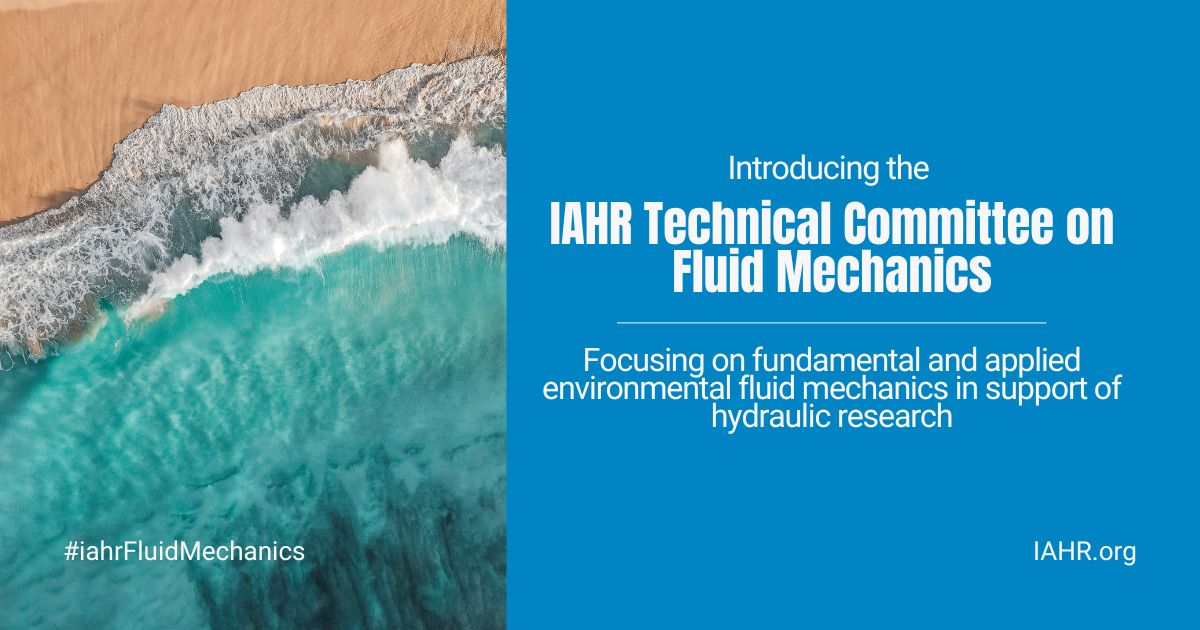Committee on Fluid Mechanics
#iahrFluidMechanics
Next events
10th Gerhard-Jirka Summer School Environmental Fluid Mechanics, Lima, Peru, from August 11th to August 15th, 2027
Mission statement
The focus of our committee is on fundamental and applied environmental fluid mechanics in support of hydraulic research. Particular emphasis is on the fundamentals of transport and mixing phenomena in turbulent flows such as contaminant transport processes in rivers, lakes and coastal regions, anthropogenic influences (e.g., heat, dissolved and suspended organic/inorganic material) and sediment dynamics. Main focus areas for our committee include:
stratified flows (e.g., gravity currents, stratified jets and plumes, internal waves) and flows in rotating fluids, where at larger scales the rotation of the earth becomes relevant;
shallow flows, in which the length scale in one direction (depth) is much smaller than the length scales in the other directions, and for which bed friction affects the development of the large-scale quasi two-dimensional structures;
flow and turbulence structure over rough boundaries and porous media, including canopies and vegetation.
two-phase laminar and turbulent flows with particular emphasis on sediment transport, high concentration mixtures showing non-Newtonian fluid behavior (e.g., mud slides, debris flows) and gas-water mixture flows caused by air entrainment at high-velocity in hydraulic structures or by cavitating flows.
interface problems. The air-water interface on the surface of a water body remains enigmatic, especially concerning the generation, growth, and instabilities of wind waves. Similarly, the water-sediment interface at a stream bed separating turbulent water flow from the behavior of granular media has not been successfully described. Solid-water interfaces encountered in biological applications (e.g. boundary layers on individual blades of vegetation or coral branches) present another unique challenge.
Major advances are expected over the next couple of years in gaining insights into the dynamics of these flows using state of the art experimental (e.g., particle image velocimetry) and numerical (e.g., direct numerical simulation DNS, large eddy simulation LES, large-scale predictive models) techniques. In particular, this should allow a better understanding of the role played by the large-scale coherent structures and the interactions between these large scales and the three-dimensional turbulence, and of the effect of the large-scale turbulence on bottom friction and morphodynamic processes.
Three of the most important and imminent challenges in environmental fluid mechanics and environmental hydraulics are to understand:
to what extent the physics of these flows is dependent on scale effects,
how the physics changes between the simpler geometries studied in the laboratory in controlled environments or using DNS/LES simulations and the complex geometries present at field scale,
how detailed understanding of the physics of simpler types of flows (e.g., jets, wakes, mixing layers) can result into better predictive analytical models that can be applied for engineering predictions and design.
These challenges also define our long term objectives. Additionally, several challenges remain related to understanding mass exchange processes relevant to hydraulics. For example, concepts such as large-scale eddy diffusivity or hydrodynamic dispersion cannot be rigorously related to the actual flow or solid matrix properties. Empiricism prevails. Advances are urgently needed to provide the tools for the solution of modern hydraulic engineering problems - which are increasingly devoted to the prediction of the transport and deposition of materials in the natural or engineered environment. Double-diffusion is another phenomenon which has not gained needed attention.
